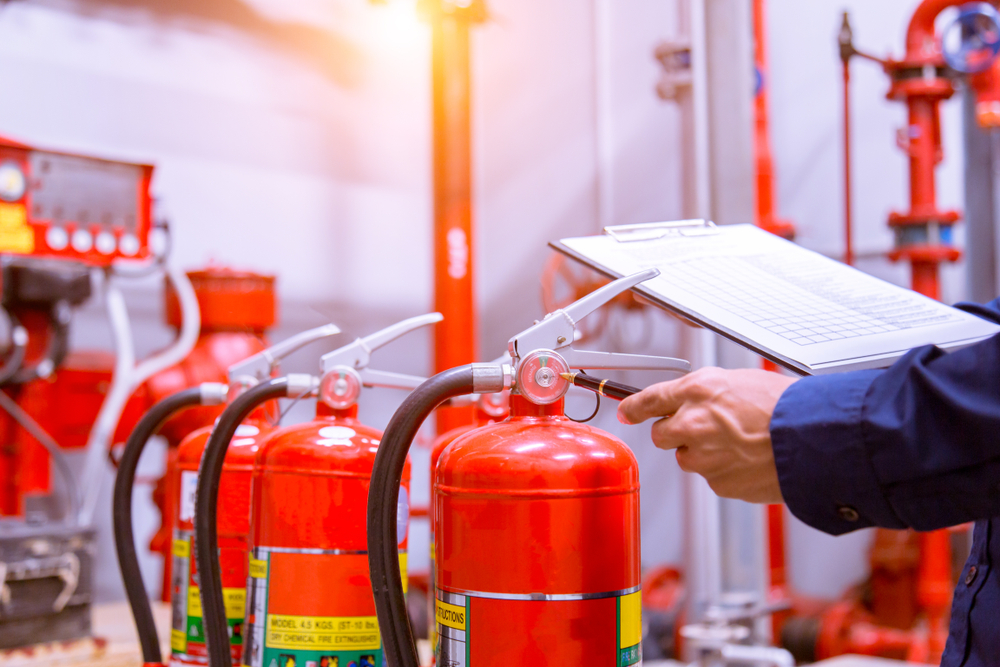Professional Fire Extinguisher Inspections: What to Expect During Annual Maintenance

When it comes to fire safety in commercial and industrial settings, fire extinguishers play a critical role in preventing and containing fires. Regular inspections and maintenance of fire extinguishers are essential to ensure they are in proper working condition and ready for use in case of an emergency. Professional fire extinguisher inspections are typically conducted annually to assess the condition of the extinguishers and make any necessary repairs or replacements. In this blog, we will explore what to expect during annual maintenance of fire extinguishers and the importance of these inspections for fire safety in the workplace.
Visual Inspection of the Fire Extinguisher
One of the first steps in a professional fire extinguisher inspection is a visual assessment of the extinguisher’s external condition. The inspector will check for physical damage, corrosion, dents, or other signs of wear that may affect the performance of the extinguisher. Additionally, the inspector will ensure that the pressure gauge is in the green zone, indicating that the extinguisher is pressurized and ready for use. Any visible defects or issues will be noted for further evaluation and potential repairs.
Verification of Accessibility and Placement
During the inspection, the inspector will also verify that the fire extinguisher is accessible and properly placed in accordance with fire safety regulations. Fire extinguishers should be easily accessible, visible, and mounted at the appropriate height for quick and efficient use in case of a fire. The inspector will assess the location of the extinguisher, as well as the signage and lighting around it to ensure that it can be easily located and accessed during an emergency.
Testing of the Fire Extinguisher’s Functionality
Another important aspect of a fire extinguisher inspection is testing the functionality of the extinguisher. The inspector will typically discharge a small amount of the extinguishing agent to ensure that the pressure and discharge mechanism are working correctly. This test helps verify that the extinguisher is operational and can effectively dispense the agent in the event of a fire. After testing, the inspector will recharge the extinguisher if necessary and confirm that it is resealed and ready for use.
Inspection of the Fire Extinguisher’s Components
In addition to visual inspection and functionality testing, the inspector will also check the various components of the fire extinguisher for signs of wear or damage. This includes inspecting the nozzle, hose, valve, pin, and other parts to ensure they are in good condition and functioning properly. Any worn-out or malfunctioning components will be replaced or repaired to ensure the extinguisher’s effectiveness in an emergency situation.
Documentation of the Inspection Findings
Once the inspection is complete, the inspector will document the findings, including any defects or issues discovered during the assessment. The inspection report will detail the condition of the fire extinguisher, any repairs or replacements made, and recommendations for future maintenance or upgrades. This documentation is important for compliance with fire safety regulations and may be required for insurance purposes or inspections by regulatory authorities.
Recertification of the Fire Extinguisher
After the inspection and any necessary repairs or replacements, the fire extinguisher may need recertification to verify that it meets safety standards and is fit for use. Recertification typically involves recharging the extinguisher, replacing inspection tags, and updating maintenance records to reflect the annual inspection. A recertified fire extinguisher provides assurance that it has been thoroughly inspected, maintained, and certified for use in case of a fire emergency.
Summary
Professional fire extinguisher inspections are essential for maintaining fire safety in commercial and industrial settings. By conducting annual maintenance inspections, businesses can ensure that their fire extinguishers are in proper working condition and ready for use in the event of a fire. Inspections typically include visual assessment, verification of accessibility and placement, testing of functionality, inspection of components, documentation of findings, and recertification of the extinguisher. Regular maintenance and inspections of fire extinguishers help protect lives and property, prevent fire-related injuries and damages, and ensure compliance with fire safety regulations. If you have fire extinguishers in your workplace, be sure to schedule annual inspections to keep them in top condition and ready for any fire emergency.
Need a Fire Equipment Supplier in Lawrenceville, GA?
Hello from AAA Fire Protection Resources, Inc.! Since opening our doors in 1981, we have been providing quality fire protection equipment for commercial locations all across Georgia! Some of the many products we offer include fire hydrants, fire training, emergency lights, exit signs, sprinkler systems, and fire alarms. In addition to selling all these products, we service and install them! We accept orders of all sizes, including large or bulk items! AAA Fire Protection Resources, Inc. offers some of the best equipment on the market all while being associated with the NFOA and NAFED, which ensures quality service! We are also active members of the GAFSED and WBENC! Give us a call today to set up an appointment or place an order!
Categorised in: Fire Extinguisher Inspection
This post was written by admin
